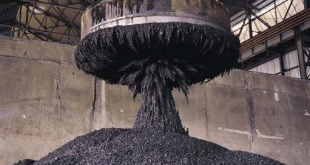Proof of reserves is all the rage on crypto platforms. The idea is that if the platform can prove to its customers' satisfaction that their deposits are fully matched by equivalent assets on the platform, their deposits are safe. And if the mechanism they use to prove this uses crypto technology, that's even better. Crypto tech solutions have surely got to be much more reliable than traditional financial accounts and audits - after all, FTX passed a U.S. GAAP audit. No, they aren't. Proof...
Read More »JP Morgan’s Coffee Machine
It's now widely accepted, though still not universally, that banks create money when they lend. But it seems to be much less widely known that they also create money when they spend. I don't just mean when they buy securities, which is rightly regarded as simply another form of lending. I mean when they buy what is now colloquially known as "stuff". Computers, for example. Or coffee machines. Imagine that a major bank - JP Morgan, for example - wants to buy a new coffee machine for one of...
Read More »Tether’s smoke and mirrors
Tether has issued what it calls a “breakdown of its reserves”. It actually consists of two pie charts. Here they are:Seriously, this is all Tether has seen fit to reveal. Furthermore, the pie charts only purport to show the breakdown of Tether’s reserves on the 31st March 2021. We do not know whether Tether’s reserves still have the same composition now. Nonetheless, the crypto world took these charts as an indication that Tether was, if not fully cash-backed, at least mostly. “76% of its...
Read More »My new podcast episode is out.
The Fed’s IOER policy is not “paying banks not to lend”
Mainstream media get this wrong all the time. The latest to go down the "paying banks not to lend" rabbit hole is Binyamin Appelbaum in the New York Times. Because he didn't understand how IOER works, he didn't understand the Fed's strategy, and wrote a post that gets it quite seriously wrong. So I've written a Forbes post attempting to set things straight. Here's a taster: The FOMC has decided not to raise interest rates – for now. But it’s still widely expected that rate rises will come...
Read More »Latest SNB Intervention Update: Weekly Sight Deposits
Weekly update on SNB interventions: Sight deposits are debt for the central bank. An increase of sight deposits implies more debt and SNB interventions
Read More »Swiss National Bank: Composition of Reserves and Investment Strategy
We regularly publish the SNB asset structure by currency, rating & duration. They shall be a template for the tactical asset allocation along these dimensions for other conservative asset managers - CHF holdings certainly excluded because the SNB nearly exclusively buys foreign assets.
Read More »Rising Sight Deposits at SNB Means Rising SNB Debt
Money creation and sight deposits may have two points of view: 1. The central bank creates money - i.e. the SNB decides to increase sight deposits when it does currency interventions 2. Commercial banks create money - inflows in CHF on Swiss bank accounts make those banks increase their "sight deposits at the SNB. If inflows in CHF are higher than outflows then CHF must rise, unless the central bank does currency interventions. We will present both alternatives.
Read More » Heterodox
Heterodox




